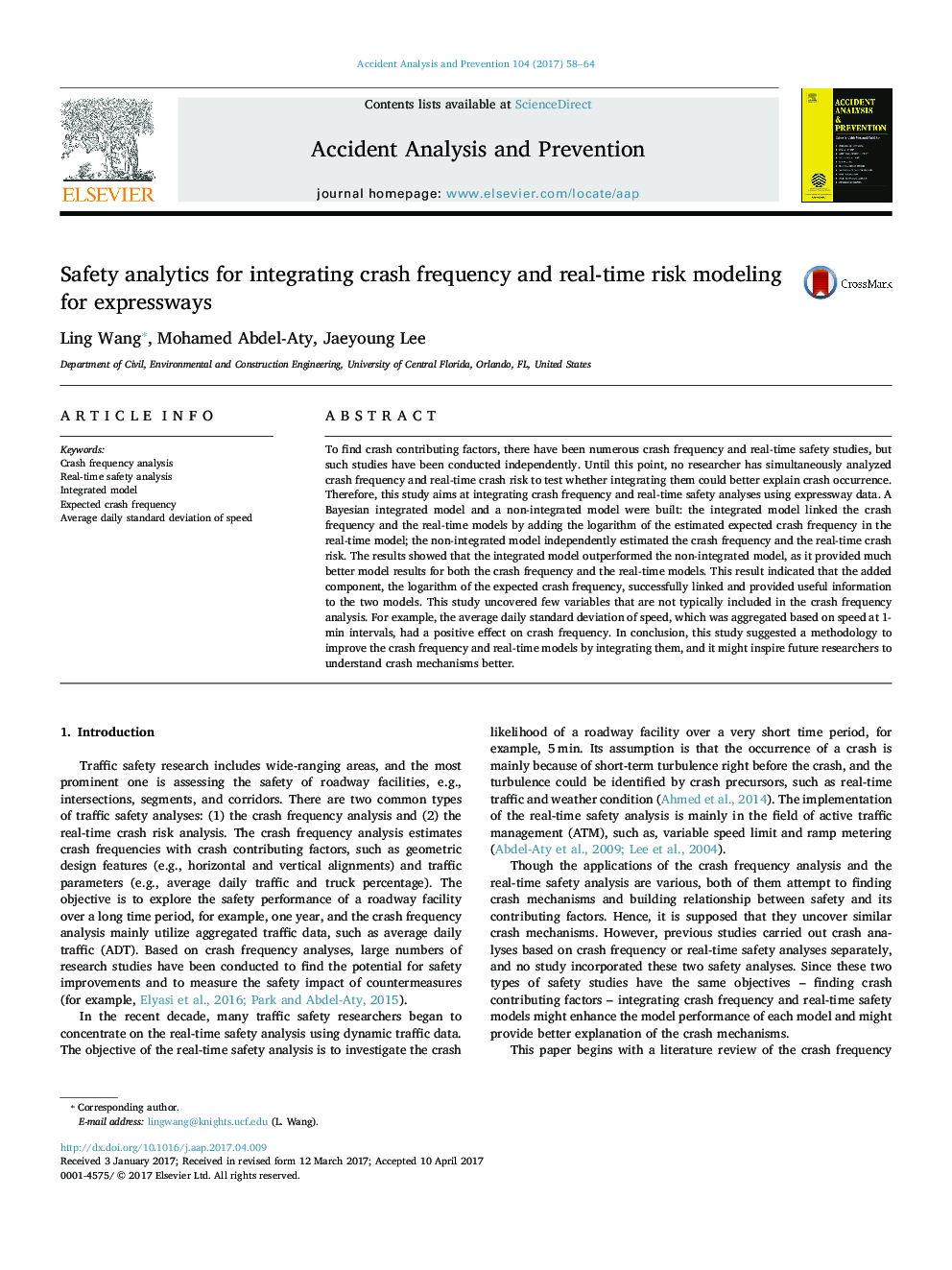| Article ID | Journal | Published Year | Pages | File Type |
|---|---|---|---|---|
| 4978621 | Accident Analysis & Prevention | 2017 | 7 Pages |
Abstract
To find crash contributing factors, there have been numerous crash frequency and real-time safety studies, but such studies have been conducted independently. Until this point, no researcher has simultaneously analyzed crash frequency and real-time crash risk to test whether integrating them could better explain crash occurrence. Therefore, this study aims at integrating crash frequency and real-time safety analyses using expressway data. A Bayesian integrated model and a non-integrated model were built: the integrated model linked the crash frequency and the real-time models by adding the logarithm of the estimated expected crash frequency in the real-time model; the non-integrated model independently estimated the crash frequency and the real-time crash risk. The results showed that the integrated model outperformed the non-integrated model, as it provided much better model results for both the crash frequency and the real-time models. This result indicated that the added component, the logarithm of the expected crash frequency, successfully linked and provided useful information to the two models. This study uncovered few variables that are not typically included in the crash frequency analysis. For example, the average daily standard deviation of speed, which was aggregated based on speed at 1-min intervals, had a positive effect on crash frequency. In conclusion, this study suggested a methodology to improve the crash frequency and real-time models by integrating them, and it might inspire future researchers to understand crash mechanisms better.
Keywords
Related Topics
Physical Sciences and Engineering
Chemical Engineering
Chemical Health and Safety
Authors
Ling Wang, Mohamed Abdel-Aty, Jaeyoung Lee,
